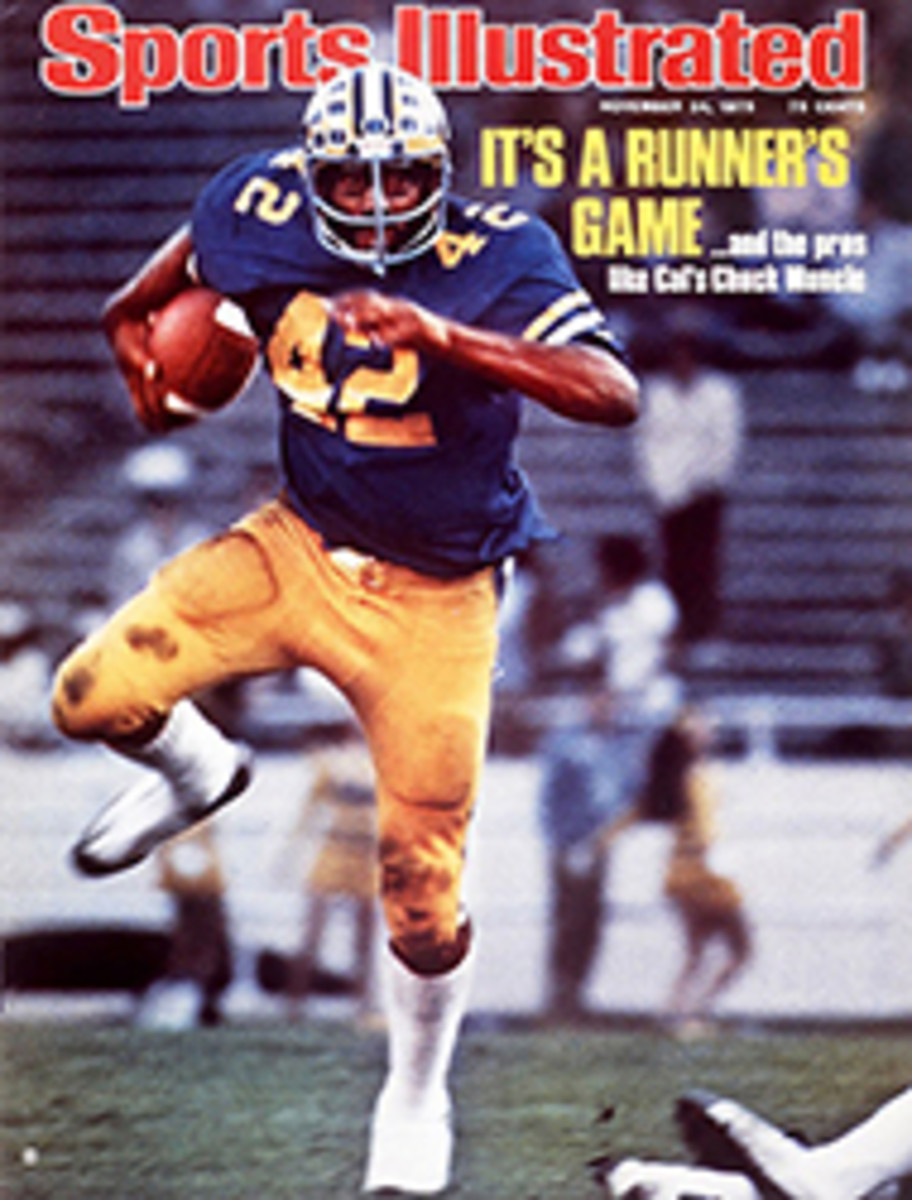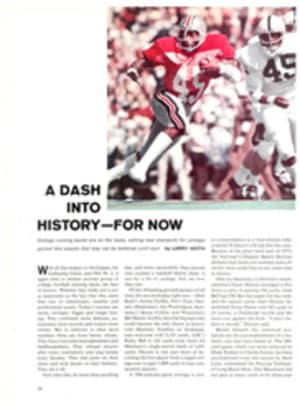
They hunt to save the hunting
High above the main street of Silver Creek, Neb., 90 miles west of Omaha, giant plywood placards spell out the words GRAND NATIONAL MIXED BAG HUNT. In store windows and shop fronts, brightly painted signs and posters welcome visitors to the year's biggest event in one of the smallest towns (pop. 480) on the Platte River.
As its imposing name suggests, the three-day Grand National, which takes place on the first weekend in November, is a hunt for a potpourri of small game—raccoon, rabbit, squirrel, duck, goose, pheasant and quail. And doing the hunting is a comparable mixture of celebrities, which in the event's four-year history has included Astronauts Ron Evans and Paul Weitz, actors Roy Rogers and Dennis Morgan, baseball personalities Roger Nelson, Norm Siebern and Hank Bauer, and a covey of governors.
Hosting the affair is the entire town of Silver Creek, its citizens having been skillfully schooled in outdoors etiquette by a 58-year-old educational administrator named Bruce Cowgill. Cowgill's efforts have earned him sufficient local fame for his picture to be prominently displayed in the window of Robak's Phillips 66 station at the corner of Vine and Route 30 with a sign proclaiming him CREEK'S NO. 1 CITIZEN. Although the picture was installed two years ago, nobody in town has since challenged Cowgill's title.
Nebraska has long called itself the Mixed Bag State, and certainly there is a cornucopia of small game around Silver Creek, but neither fact completely explains all the hoopla surrounding the Grand National. Nor does it account for the number of people, up to 1,000, who annually arrive from all over the country, especially since many have equivalent hunting available considerably closer to home. The key is what Bruce Cowgill has done to be named Creek's No. 1 citizen.
Psychologists could probably offer an assortment of complex rationales to explain Cowgill's all-consuming dedication to creating and promoting the Grand National Mixed Bag Hunt, and doubtless some of them would be true. But as far as Cowgill himself is concerned, he has had only one aim: to save the game before it is gone. It has been going entirely too fast for his taste. In the 1950s there were 18 million pheasants in Nebraska's cornfields. Today that number has fallen to around three million. The stocks of quail, rabbit and squirrel have dwindled proportionately.
Although hunters are often blamed for this state of affairs, studies show that the farmer is the principal villain—although in most cases an unwitting one. What has happened to Nebraska's small game in the last quarter of a century is linked directly to what has happened to farming. As the soil-bank program ran out and land that had been deliberately retired was again put into production, and as farm equipment and techniques became so sophisticated that it was possible to cultivate even tiny fractions of land, the ground cover that provided nesting, feed and security for game began to disappear. With each fence row and coulee that fell to the plow, so, too, fell families of pheasants or quail or grouse. Without habitat there can be no game. Biologists and wildlife management experts had no trouble recognizing the problem, but there was little they could do about solving it.
"Obviously the needs of private landowners came first," Cowgill says, "and it did not make sense to expect them to retire productive acreage from cultivation purely to provide game cover.
"But it did occur to me that a lot of marginal land was also being cleared, burned, mowed and sprayed simply because it was adjacent to productive land, easy to clear and looked better if it matched the rest of the terrain. In addition, huge stretches of land along highways, railroad rights-of-way and drainage ditches were being cleared purely for cosmetic reasons. I figured if I could convince the people with jurisdiction over these lands, along with the farmers, that by leaving them untouched they would be doing a genuine service to wildlife and to their state, we might be able to restore at least part of the habitat."
Cowgill worked out a program that was both simple and practical. It involved a landowner setting aside an acre or more of marginal or submarginal land for a period of one year during which his sole obligation was to do nothing. The land was not to be mowed, plowed, burned, grazed or sprayed. Other than this nonaction, the landowner retained full rights over the acreage, including the right to close it to hunting if he so wished.
In return for permitting his land to go wild, the farmer received a year's free subscription to the state's conservation magazine NEBRASKA land, a green-and-white "Cover Agent" shoulder patch and two sets of signs: one to mark the area as cover for wildlife, and one to identify the landowner as a participant in the project.
Having christened his program "Acres for Wildlife," Cowgill set out to sell it. He began by making a series of photo slides for which he recorded a commentary tracing the diminishing game habitat of the state, its effect upon wildlife and what could be done to counteract the loss. The presentation, which takes 20 minutes, emphasizes the value of brush piles, hedges, fences and windrows as shelter belts and cover patches. Cowgill then began a one-man campaign throughout the state, on his own time and at his own expense, during which he showed his slides before several hundred club and community gatherings.
He had anticipated acceptance in the rural areas, where game and its decline was a genuine concern and where his audience consisted of landowners, but Cowgill was unprepared for the enthusiasm with which his program was greeted in the cities. Apartment dwellers in Omaha embraced the project as eagerly as farmers on the Platte. The fact that they owned no land of their own to put aside for wildlife was unimportant. They knew people who did, or they went out and found people who did, and persuaded them to join the crusade.
By the end of its first year, 1970, Acres for Wildlife had enrolled more than 20,000 private acres throughout the state and Cowgill was moving on into neighboring territory. His success only whetted Cowgill's drive and imagination. The way to enroll the entire country, he decided, was to direct its attention to what had already been achieved in Nebraska. So in 1972 the Grand National Mixed Bag Hunt was born.
Cowgill had figured that if he could lure some famous people—along with the press and publicity that follow them—to Nebraska long enough to be shown just what Acres for Wildlife had accomplished, they would pass on to the rest of the country how much of its own dwindling small-game population could be restored.
To make certain that Silver Creek was behind the project, Cowgill devised enough peripheral activities—an essay contest, an arts and crafts display, a muzzle-loader contest and trap shoots—to get everyone in Silver Creek from kindergartners to Medicare recipients involved. It never occurred to him that anybody would be less than enthusiastic about his idea.
And so far as the townsfolk went, he was right. It was the invited celebrities who proved a problem. Cowgill had written letters, hundreds of letters, inviting personalities in sports, show business, politics and the arts and sciences to participate in the first Grand National Mixed Bag Hunt. Most ignored the letters, some hedged, some sent polite refusals. Finally, when prospects were beginning to look dismal, Roy Rogers said he would be there.
That was the break Cowgill needed. With one big name on the list, others were easier to acquire; by the time the first hunt was under way Rogers had been joined by archery's Fred Bear, baseball players Harmon Killebrew and Freddie Patek, Hall of Famer Bob Feller and the newspaper, magazine and television writers who came in their wake. The Grand National Mixed Bag Hunt was successfully launched. Silver Creek, once an obscure dot on the map, was suddenly Someplace, and Cowgill's hunt was Something.
Young tradition dictates that the annual affair begin on Thursday evening with a supper of ham and hot potato salad in one of the cottages at a lakeside development on the edge of Silver Creek. As soon as the last forkful is down, the contestants take off in pickup trucks and jeeps to neighboring farms where sons and cousins and acquaintances are waiting to join in a coon hunt. The chase is appropriately confusing as hordes of people dash about in the dark trying to follow dogs across country with which many are completely unfamiliar. In spite of it all, some coons are run down, treed and bayed (none were shot this year, as it was still closed season). Everybody winds up drinking hot coffee and eating homemade cake about 2 a.m. in one of the many farmhouses that open their doors to the hunters.
The next morning, before dawn, the contestants are out again, this time on their way to the duck blinds via a wet walk through thin stands of river brush and the fast-flowing, thigh-high waters of the Platte. The dark silhouettes of decoys cast strange shadows on the water, and hunters huddle lower in the reed and grass blinds, scanning the brightening sky for birds. By 11 the hunt is over, the decoys are collected and the return hike begins. At its end is a feast of Thanksgiving proportions prepared by Barbara Cowgill and the ladies of the Civic Club, followed by Bruce Cowgill's slide show.
Then comes squirrel hunting in the stands of trees along the river and the fields beyond, followed by brush-pile building, in which everyone, including Nebraska Governor J. James Exon, collects broken limbs and fallen trees to provide new game cover. That night there is a barbecue at the local American Legion Hall at which at least half of Silver Creek is present in addition to the visitors. The final morning of the Grand National is also the opening day of Nebraska's pheasant season. The top dog handlers in the state volunteer their champions for the hunt, and well before dawn dog carriers begin gathering.
When the pheasant shooting is over, there is quail hunting, and rabbits are fair game at all times. On the final evening everyone attends a banquet for the presentation of awards. Team titles are decided on a cumulative point basis, with each type of small game killed, or treed in the case of coons, worth 25, 50 or 100 points. In case of ties, the team using the least number of shells wins. This year the team title, which in the past has gone to groups captained by Rogers (1972), Weitz (1973) and Nelson (tied with game call manufacturer Jim Olt's team in '74), was won by champion sharpshooter Bill Jordan and his squad, with a point total of 1,225. But more important is the fact that eight states now have Acres for Wildlife programs, with another three in the process of establishing them.
"It is really remarkable," says Weitz, a former celebrity trapshoot winner, "that a town so small can do such a big job. When I read all that advance publicity', and all those clips and things, I just figured Silver Creek had to be a big place. Now that I have been there, I realize that it's not the place that's big, it's the people."
PHOTO
GUESTS SEEK GAME AND POINTS IN A HABITAT THE GRAND NATIONAL IS RESTORING

